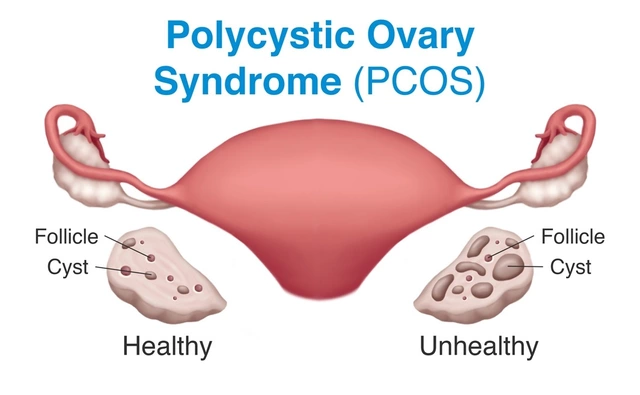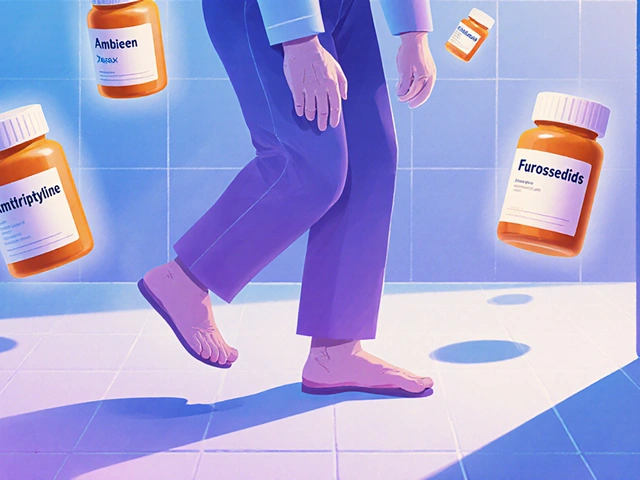Understanding Atomoxetine and Its Role in Palliative Care
As a blogger, I recognize the importance of enlightening my readers on complex topics, and today's topic is Atomoxetine and its role in end-of-life care. Atomoxetine, a selective norepinephrine reuptake inhibitor, is primarily used to manage attention deficit hyperactivity disorder (ADHD). However, its role in end-of-life care is an area that is yet to be fully explored. It is important to note that this medication has potential benefits in managing symptoms associated with end-of-life care, and it’s my pleasure to delve into this subject more deeply.
Atomoxetine: An Overview and Its Potential Benefits
Let's begin by understanding what Atomoxetine is all about. Atomoxetine is a medication that increases the levels of norepinephrine, a neurotransmitter in the brain that helps regulate attention, impulsivity, and activity levels. This makes it effective in treating ADHD. However, the potential benefits of Atomoxetine in palliative care revolve around the management of symptoms such as pain, depression, and anxiety, often experienced by patients at the end of life.
The potential benefits of Atomoxetine in this regard are due to its ability to regulate neurotransmitters in the brain. By increasing norepinephrine levels, Atomoxetine can help manage chronic pain, a common complaint among patients in end-of-life care. Additionally, by influencing the brain's serotonin levels, it may help alleviate depression and anxiety, improving the overall quality of life for these patients.
Exploring the Use of Atomoxetine for Pain Management
Chronic pain is a major concern in end-of-life care. It can significantly hamper the quality of life of patients. Atomoxetine, with its norepinephrine-enhancing properties, has been identified as a potential tool in managing this pain. Norepinephrine is a key player in the body's pain pathways. By increasing the levels of this neurotransmitter, Atomoxetine may help in diminishing the perception of pain, thereby providing relief to patients.
However, it's crucial to understand that the use of Atomoxetine for pain management in end-of-life care is still under research. While preliminary studies show promise, further research is needed to establish its efficacy and safety in this context.
Addressing Depression and Anxiety with Atomoxetine
Depression and anxiety are also common challenges in end-of-life care. The uncertainty and fear associated with impending death can lead to significant psychological distress. Atomoxetine, through its influence on brain neurotransmitters, may help manage these symptoms.
Depression is often linked with low levels of serotonin, a neurotransmitter that influences mood. Atomoxetine, while primarily enhancing norepinephrine, may also influence serotonin levels in the brain, potentially alleviating depressive symptoms. Similarly, by regulating neurotransmitter levels, it may also help manage anxiety, thereby improving the psychological well-being of patients in palliative care.
Considering the Side Effects and Contraindications of Atomoxetine
Like any medication, Atomoxetine is not without potential side effects. These may include nausea, decreased appetite, and sleep problems. More serious side effects, though less common, can include increased blood pressure, liver problems, and suicidal thoughts. It is therefore vital that healthcare providers closely monitor patients taking Atomoxetine, adjusting dosages as necessary to balance benefits against potential side effects.
Atomoxetine also has certain contraindications. It is not recommended for patients with narrow angle glaucoma, pheochromocytoma, severe heart disorders, or those who are allergic to its ingredients. It's also crucial to consider potential interactions with other medications the patient may be taking. Therefore, a comprehensive medical evaluation is necessary before incorporating Atomoxetine into a patient's end-of-life care plan.
In conclusion, Atomoxetine shows promise in managing symptoms associated with end-of-life care, particularly chronic pain, depression, and anxiety. However, its use in this context is still under research, and a careful consideration of potential side effects and contraindications is vital. As a blogger, my aim is to keep you informed about such developments, shedding light on new possibilities in the realm of healthcare.







Alex Mitchell
July 21, 2023 AT 16:32